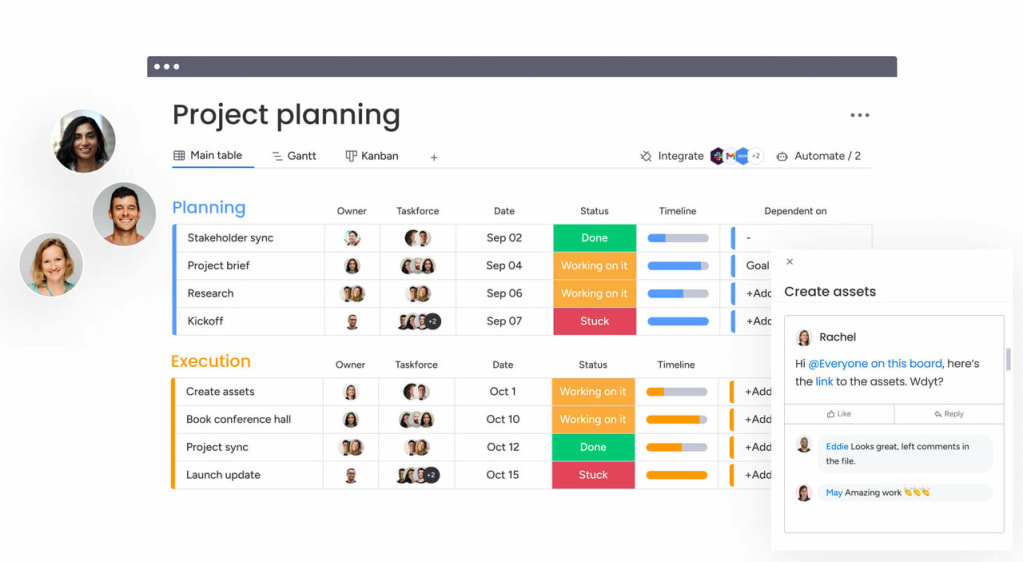Imagine you were given a task to build a wall. Rather than jumping straight towards making sure it’s lined up properly or painted, you’d want to cut the task down to the simplest form: laying one brick at a time.
Much like a brick wall, decomposition in project management urges you to approach projects one task at a time, carefully laying each brick to build an outcome that’s stable from the bottom up. In this article, we’ll give you a more detailed look at project decomposition, outline the steps you need to implement it, and look at how software like monday work management can help teams lay out plans for complex projects.
Get startedWhat is decomposition in project management?
Decomposition in project management is a process of breaking a large, complex project into smaller, more manageable parts. This technique can be used to decompose a project into smaller tasks or to decompose a large product into smaller component parts. Larger tasks or objectives are often referred to as “deliverables,” and when smaller subparts are assigned, they’re referred to as “work packages.”
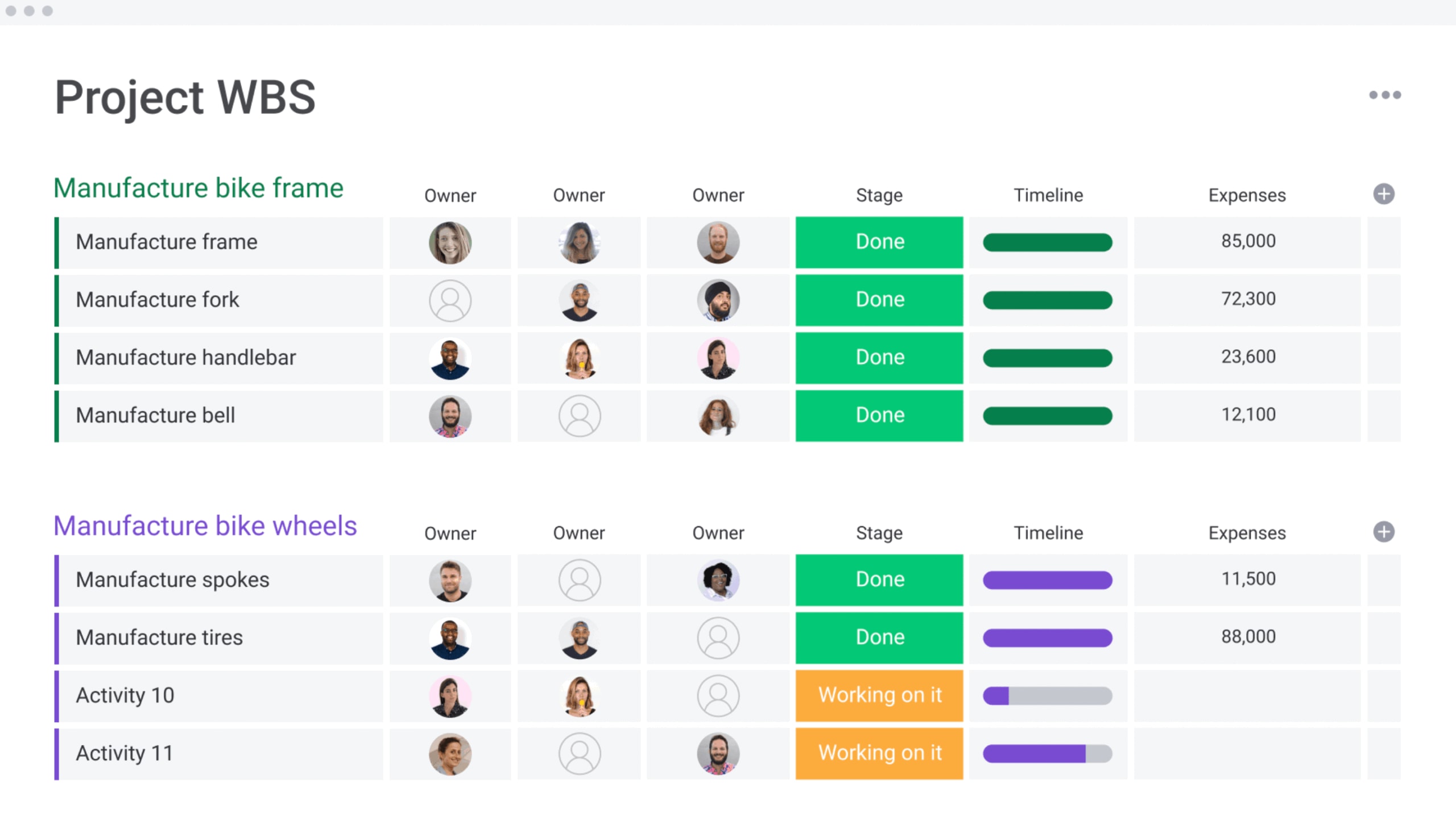
When decomposing a project, teams typically use a hierarchical framework called a work breakdown structure (WBS) to organize work into levels. The WBS starts with the overall project objective, breaks it down into major deliverables, and then into smaller work packages that can be scheduled, assigned, and tracked. Identifying dependencies between these elements ensures work is completed in the right sequence and helps teams improve estimation accuracy, communication, and coordination.
Decomposition in project management vs. traditional project management
Traditional project management generally adheres to a linear model in which tasks are completed sequentially from start to finish. This approach can work well for simple projects that don’t involve too many moving parts. However, it can quickly become unwieldy as a project grows more complex.
In contrast, project decomposition takes a more flexible approach, breaking a project down into smaller pieces that can be worked on independently. This allows for greater flexibility and agility as well as a better understanding of the project as a whole. It also makes it easier to identify and fix errors as each component can be debugged independently.
In practice, project decomposition is most often used during the planning phase of large or complex projects, regardless of whether teams ultimately execute work using Waterfall, Agile, or hybrid methodologies.
When should you decompose a project?
Project decomposition isn’t suitable for every type of project. It works best with large-scale projects that can be easily broken down into distinct parts.
Deliverables can be set according to departments, especially useful for cross-departmental collaborations, and they can be broken up into smaller work packages. By contrast, it really wouldn’t make sense to break down a small project that only consists of one homogenous activity.
When breaking down a project into work packages, it helps to make each work package roughly the same size in terms of hours and scope. For example, you might want to make your work packages roughly 40 hours long, corresponding to about a week of work, which can be easily organized and scheduled with project team members. For smaller projects that don’t need multiple 40-hour work packages, it makes more sense to use a different method, like a simple task list, Kanban board, or Agile sprint planning.
Example of project decomposition in practice
To see how project decomposition works in the real world, imagine a website redesign project.
At the highest level, the overall project goal is “launch a new website.” From there, the project can be decomposed into major deliverables such as design, content, development, and quality assurance. Each deliverable is then broken down into smaller work packages. For example, the content deliverable may include tasks like auditing existing pages, writing new copy, reviewing content with stakeholders, and publishing approved pages.
By breaking the project down this way, teams can assign ownership at the work-package level, identify dependencies between tasks (such as content approval before development), and track progress without losing sight of the overall goal.
6 steps to execute project decomposition
Breaking a project down into small, manageable parts might seem straightforward, but to do it right, it’s important to follow a few key steps. Let’s walk through the 6 steps of project decomposition.
1. Assess your project’s scope
The first step in any new project is to determine the main objective or big picture. To do this, you need to understand the scope of your project and how complex it’s going to be, and then determine your existing resources and any missing ones.
2. Decide on project objectives and deliverables
Within the project, figure out what the major objectives or project categories are. Involve stakeholders in this process to make sure all deliverables are accounted for, and then get into detail on what each deliverable entails. You could break down each deliverable into categories like product development, branding, and marketing, and then break each one down further. For example, marketing could be broken down into SEO content strategy, social media, and email marketing.
3. Determine task priority and dependencies
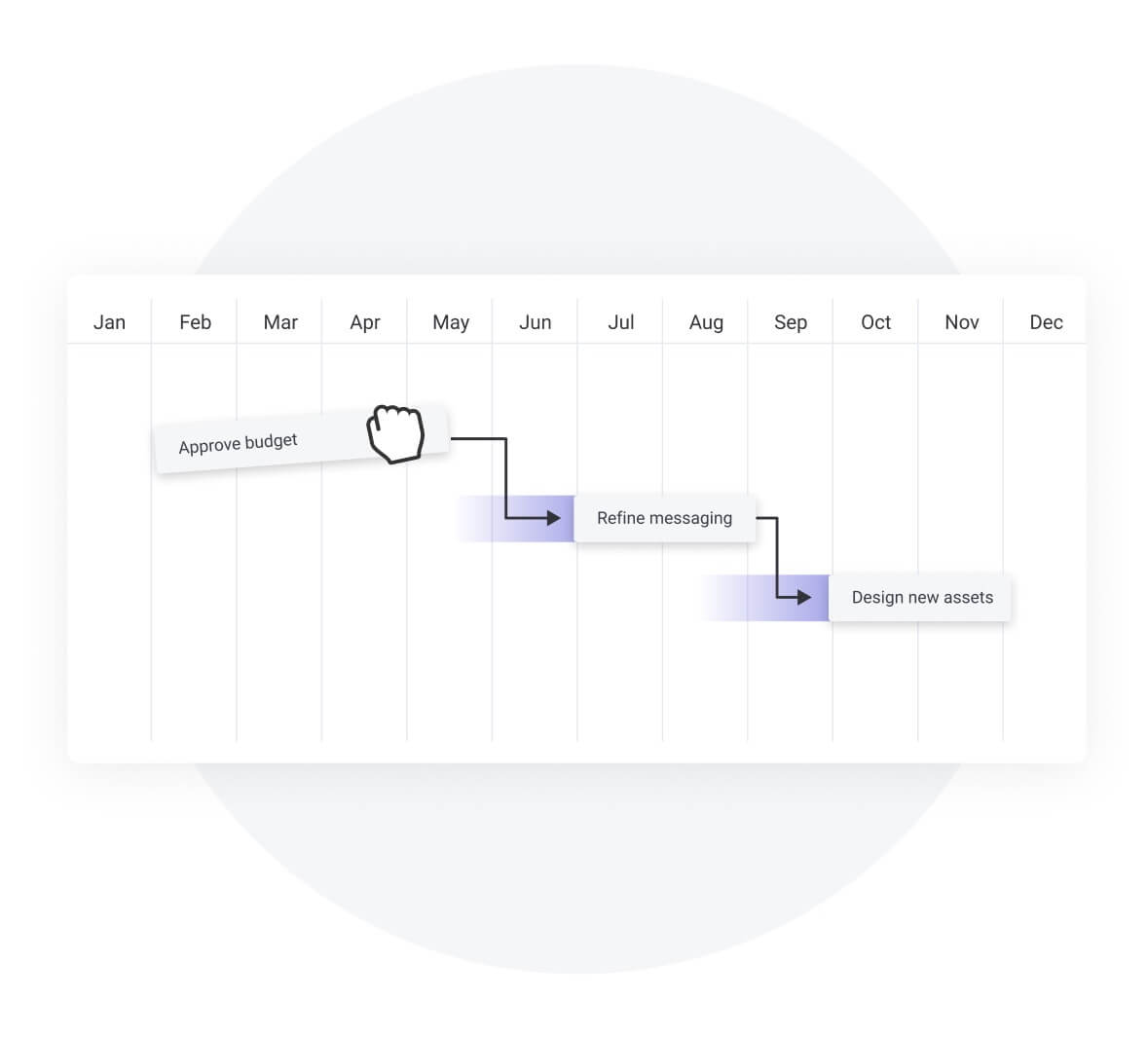
Next, you want to break your project elements and deliverables down even further. Consider the sequence of events that needs to occur within your task to understand task dependencies, and based on that, prioritize high-value tasks that will move your project forward. Make sure these task priorities and dependencies are clearly communicated to your team so that everyone understands the project’s critical path.
4. Create and assign work packages to team members
Work packages are the smallest unit of work in a WBS, and they’re what’s going to be assigned to your team members. A work package helps you break down each task granularly and identify every item that needs to be done, helping you determine budget, deadlines, roles, and responsibilities.
5. Organize everything using a work breakdown structure
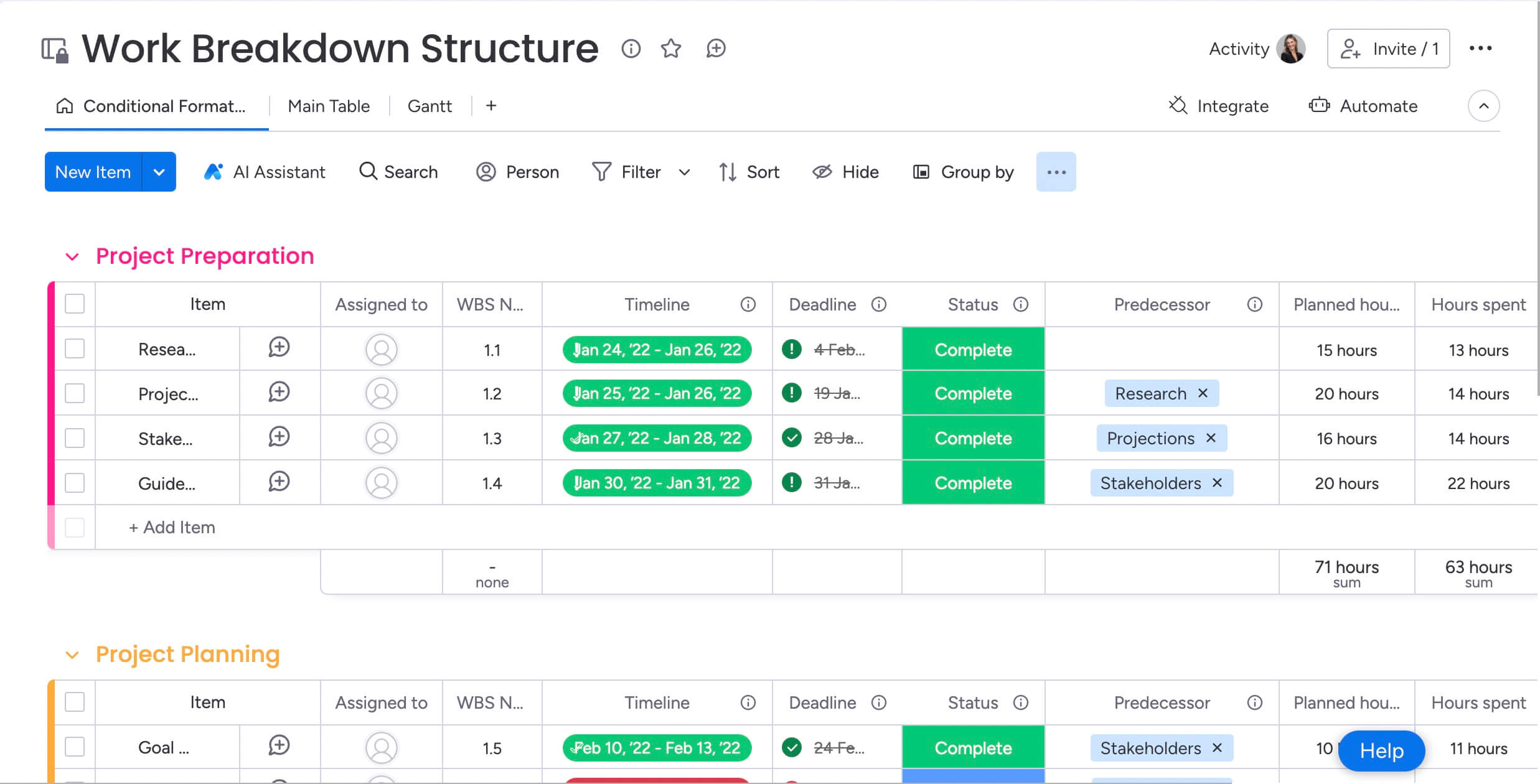
Your work breakdown structure should guide your project decomposition from the start, but to keep everything organized, make sure you’re using a platform so that your WBS is both shareable and transparent. For example, you can use the WBS template in monday work management to visually code and label blocks of work packages, easily assign tasks to team members, and ensure smooth communication and collaboration.
Get started6. Continuously monitor and adjust
Project decomposition can involve a lot of trial and error. To make sure you’ve adequately broken down your tasks, determined dependencies, and assigned manageable work packages, it’s essential to regularly assess progress and performance. Look at whether important project milestones are on schedule, if your project is on budget, and whether resources are balanced or tight to understand if you need to reallocate based on team needs, project changes, or customer demands.
Benefits and challenges of decomposition in project management
Decomposition in project management comes with a number of advantages, but it also has its drawbacks if it’s used for the wrong types of projects. It’s important to have a good grasp on how teams can benefit from decomposing projects and where the risks lie so that you can make the best decision for your team. Here are the main benefits and drawbacks of project decomposition:
Benefits
- Breaking down the project makes it easier to assign tasks
- Mistakes can be traced back to a particular component
- Large projects become less overwhelming
- Better time management, as sub-tasks can be worked on simultaneously by different teams
- Helps you create a more accurate budgets with cost estimates
- Teams can stay agile and adaptable to respond to changing project needs
- Easier to contain risks in each project segment
Challenges
- Not suitable for all types of projects, such as small projects or projects with no distinct parts
- Getting into too many details on every task can waste time and resources when not done thoughtfully
- May lead to a loss of focus on the overall goal if individual teams lose sight of the big picture
- Can create duplicative work and can increase the chances of errors
- May lead to costly errors if task dependencies are overlooked or not outlined correctly
As projects become more detailed, the number of interdependencies between tasks increases. This can make it difficult to make changes or adapt to unexpected events. As a result, decomposition should be carefully weighed against other factors such as time pressure and the need for flexibility.
Effectively map out your project decomposition with monday work management
A work breakdown structure template provides a clear and concise way to decompose projects into smaller, more manageable tasks. With the WBS template in monday work management, teams can easily define a project’s scope, create and assign tasks, and create work packages based on available resources.
In addition to a WBS template, monday work management is also powered by advanced AI to empower teams to make smarter project decisions. Pulling from real-time data, monday work management’s AI helps teams steer projects in the right direction with high-level reporting, task automation, and predictive analytics.
Let’s take a more detailed look at some of monday work management’s core features that make it a reliable option for decomposition in project management.
Predictive analytics and resource forecasting
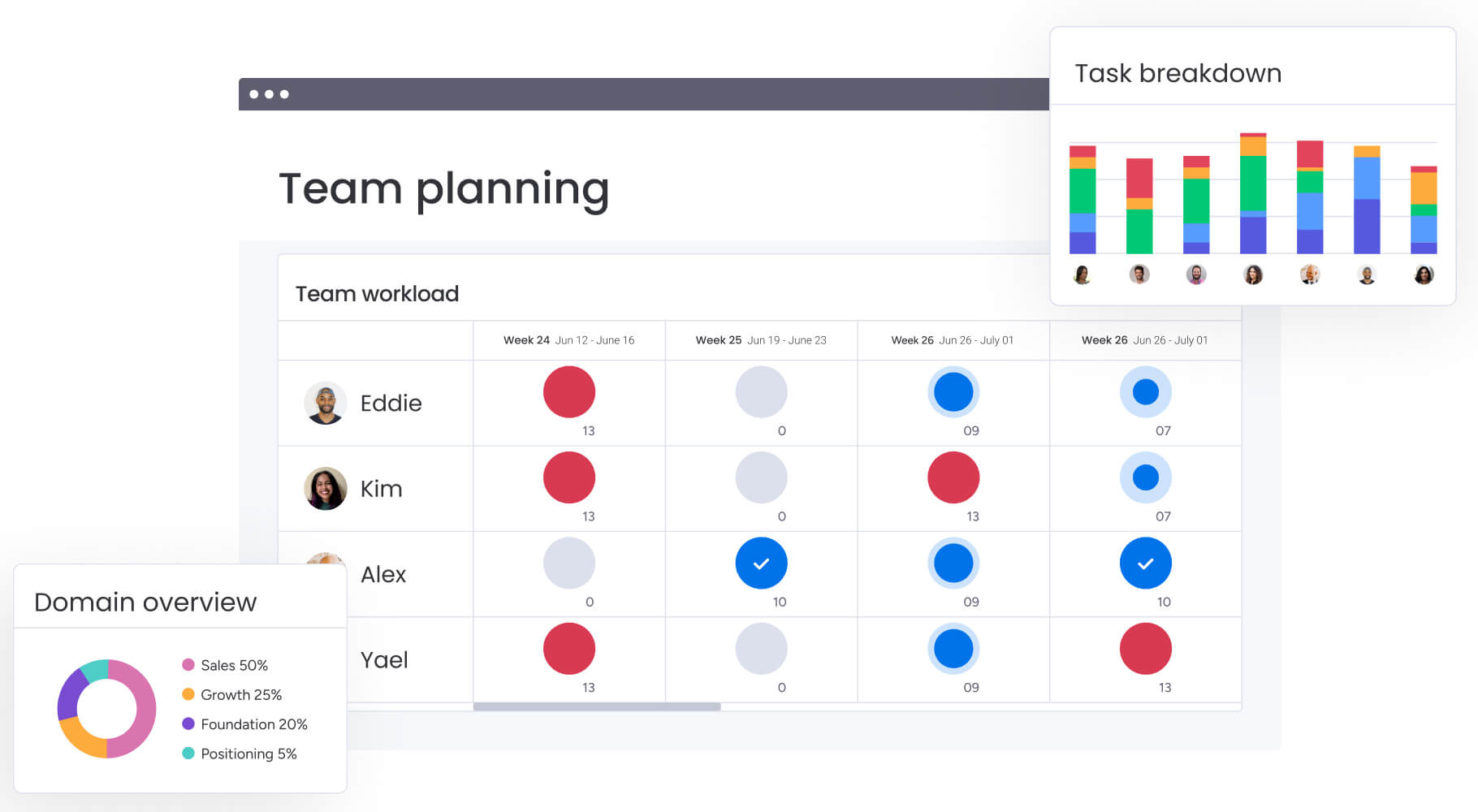
Even once all your tasks are broken down into their smallest chunks, you want to make sure you’re on the right path. With monday work management’s predictive analytics, you can peer into the future thanks to historical data, trends, and performance patterns to discern whether your project will be on time and shine a light on projected resource needs.
AI-powered no-code automations
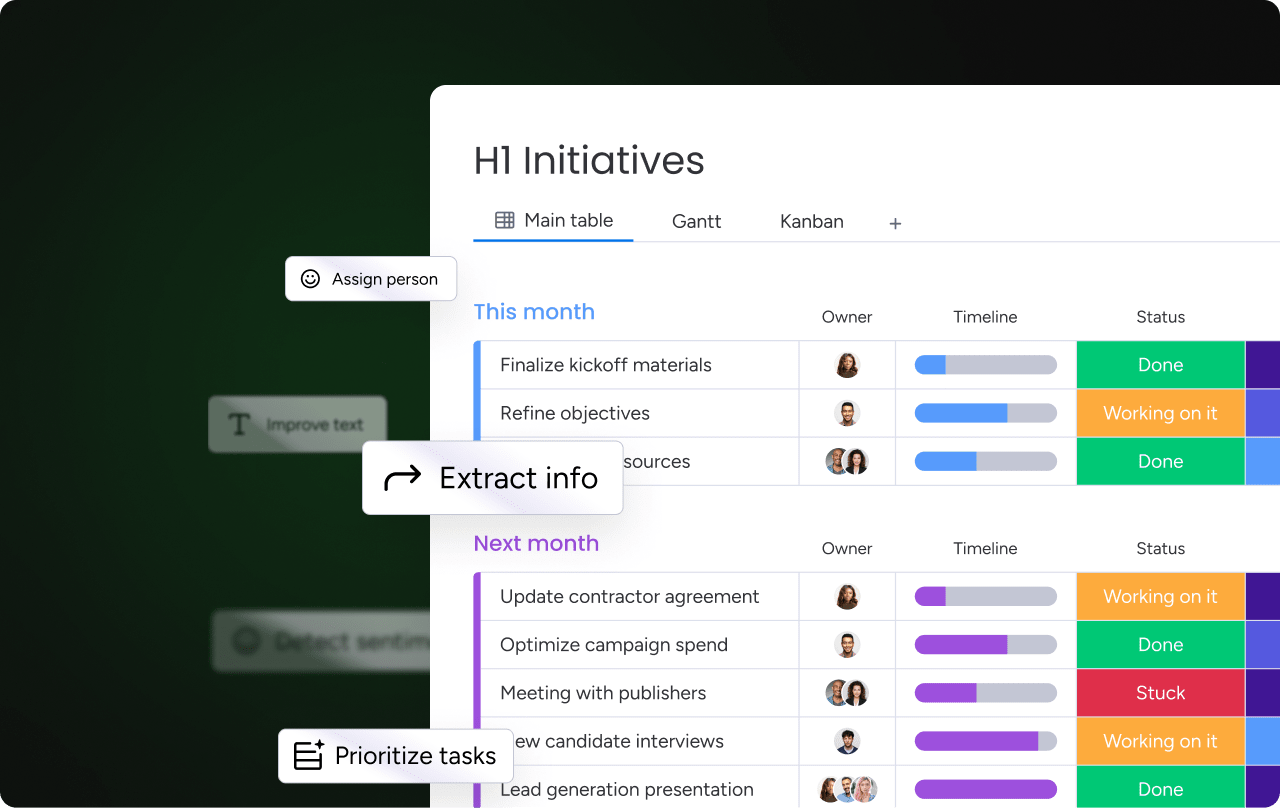
Make sure collaboration and communication are entirely painless with monday work management’s no-code AI automations. Implement the platform’s AI blocks for instant automation recipes to summarize key conversations, extract critical data from files, or auto-assign tasks to specific team members based on availability or predetermined parameters.
Task categorization with AI
Task management, particularly task categorization and prioritization during project decomposition, is a time-consuming process when handled manually. In monday work management, teams can rely on AI to assign task categories and prioritization levels to make it quicker to determine a project’s most important elements. This way, you can spend more time focusing on those core milestones and less time sorting through smaller project tasks.
AI risk analysis
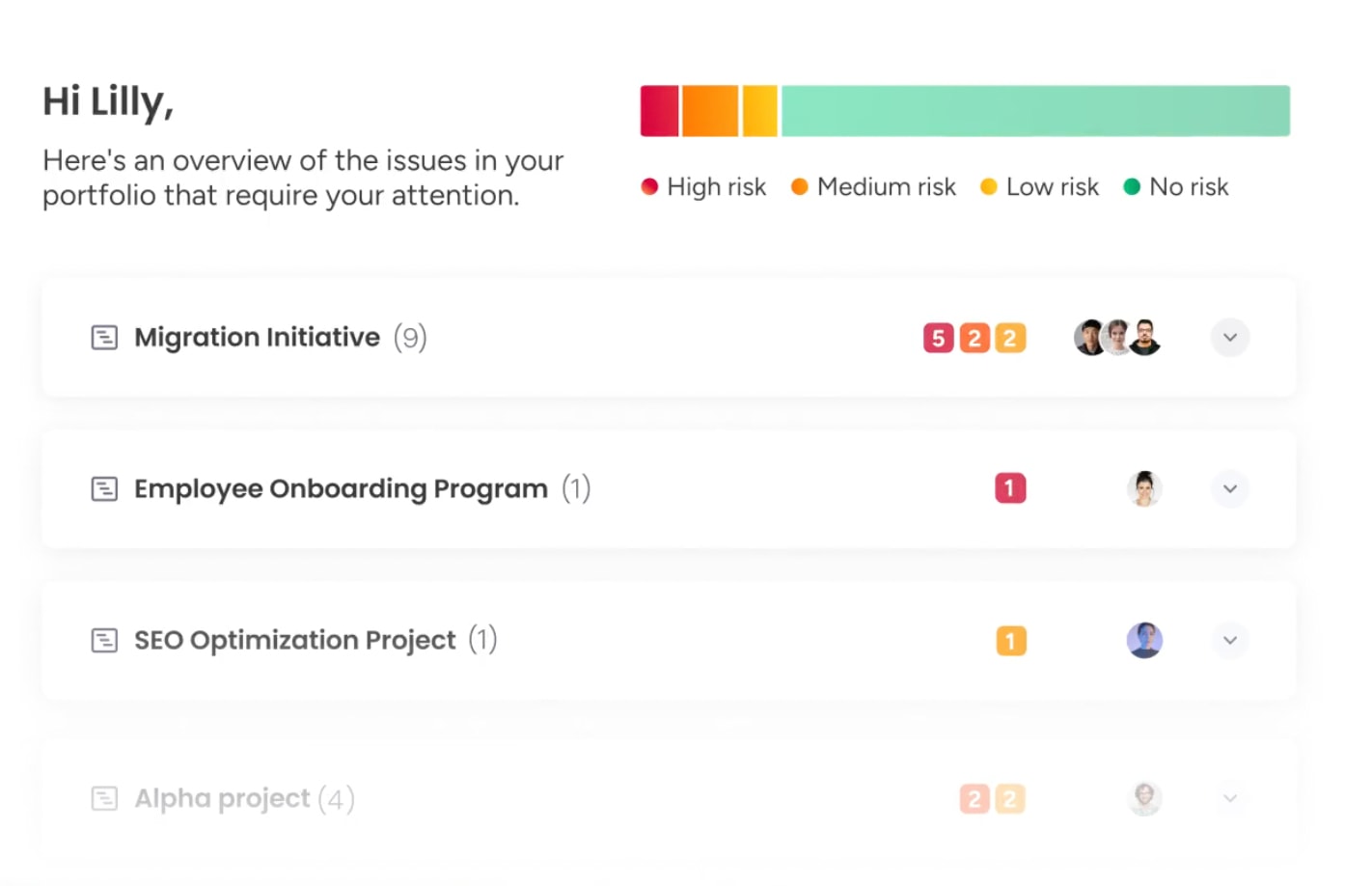
Gain clarity on potential project risks with the AI risk insights baked into monday work management. The risk insight feature can alert you to potential issues before they escalate, assign a risk level, and point to specific tasks that are stuck or delays that may impact project deliverables.
Build better projects one brick at a time
If every time we set out to complete large, complex projects, we tried to tackle them as a whole, successful projects would be few and far between. Breaking complex projects down into smaller components provides teams with a clear road map for how to achieve the primary objective, but it also makes assigning work much easier.
When breaking down your project, make sure to use a work breakdown structure to clearly visualize the project breakdown. An AI-driven solution like monday work management offers a WBS template along with an intuitive platform that allows teams to stay on top of every task in a project, no matter how big or small.
Get startedFAQs
How do you decompose a project?
To decompose a project, you’ll need to break the project down into smaller, more manageable pieces and assign them to team members. Often, these task assignments are called work packages. You can use a WBS template to help you break down the big picture of a project into smaller components.
What is a work breakdown structure (WBS)?
A work breakdown structure (WBS) is a hierarchical decomposition of a project into smaller, manageable components. It organizes the project scope from top to bottom, starting with the overall project goal, breaking it down into major deliverables, and ending with individual work packages. The WBS provides a visual framework for planning, organizing, and tracking all project work.
How is chunking different from decomposing in project management?
Chunking and decomposing a project both refer to the process of breaking a larger project down into smaller, more achievable components. Because in project decomposition you break a larger deliverable down into smaller chunks, this process can also be called “chunking.”
Which tools can help with decomposition in project management?
Different project and task management tools can help teams with decomposition in project management. For instance, monday work management offers teams a platform to visually break projects down into manageable chunks, delegate tasks, monitor progress, and connect everything to your work breakdown structure.
